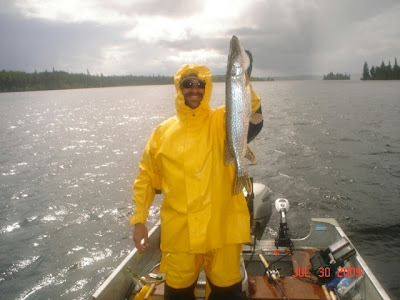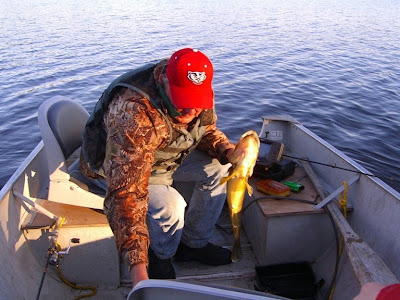
When you are at camp this summer you may notice dozens of small rings on the lake's surface in the evening when the water is flat.
This is especially the case in deep-water bays like Pipestone, Trout and Big Red (our camp name for the Potato Island basin) but they can also occur everywhere including right in the narrows in front of camp.
These rings are small but bigger than those made by minnows. They are not the mighty swirls made by any of Red Lake's famous gamefish: walleye, northern pike and lake trout.
It took me years and a side-scanning fish finder to finally discover what makes them.
They're tulibee, also known as ciscoes and lake herring.
What I first noticed with the side-looking fish finder was that there were fish about 90 feet from the boat, right on the surface and right where the rings were forming.
We tried stealthily paddling toward the fish but they would just move off, always keeping about 90 feet from the boat. We even tried sitting still for hours, hoping the fish would forget we were there. They never did and in fact it gave me a whole new appreciation of fishes' senses. Fish don't need to see, hear or smell you to know of your presence. Their lateral line can also detect electrical disturbances in the water and motion. In the case of a motionless, silent boat, they probably could detect an electrical discharge just from the aluminum hull reacting with the lake water.
This has big implications for those anglers who think you must have an electric trolling motor to "sneak up" on the fish. The turning propeller and the electric motor are broadcasting your presence probably just as much as an outboard motor.
Anyway, getting back to the mysterious fish 90 feet from the boat, we tried casting lures to these fish which, incidentally, showed up as medium-size on the fish finder. They sort of looked like walleyes.
Nothing ever took these offerings. Finally it occurred to us that perhaps the fish were either whitefish or tulibee, both of which have very small mouths. So we took an ultralight rod and reel which would cast a 1/8-ounce jig out 90 feet and presto, we had ourselves a tulibee.
These aren't tiny fish. They average 1-2 pounds, so you would think they would make a bigger splash on the surface. But apparently the tulibee are picking insects off the top of the water and they do so by delicately inhaling them from below. In other words, they just stick their snouts above the water, leaving the little rings to mark their passing.
Tulibee are not a good eating fish -- for humans -- but they're a favorite for northern pike and lake trout. Every so often, out there among the tulibee rings, there is a big splash and some tulibee has become a late-night snack.
You can catch these tulibee-eating predators just by noticing where they swirled and then casting regular lures like spoons, spinners and Rapalas.
Don't be surprised if the big fish turns out to be a lake trout, even in the middle of the summer when the water is at its warmest and conventional wisdom tells you that the cold water-loving lake trout are down at the thermocline, 50-60 feet below. Trout readily come to the surface during times of flat water, including in the middle of the day, to grab a nice juicy tulibee that is "pinned" against the surface.
When the water isn't flat tulibee are always half way to the bottom. They can be caught there too by anglers, usually by using 1/4 ounce jigs with white twister tails. Jigs of one-eighth would work even better but you just can't get them down to that depth.
I've never caught a walleye while casting for surface tulibee but walleye certainly love them, just ask all the fishermen who use dead bait at camp. The dead bait are frozen ciscoes, just 6 inches long. Most people cut them in half and put them on a 5/0 circle hook and fish them with a bobber for northern pike. Sometimes half the fish they catch are big walleyes.
Click to go back to our website:
Click to see the latest on the blog:



















